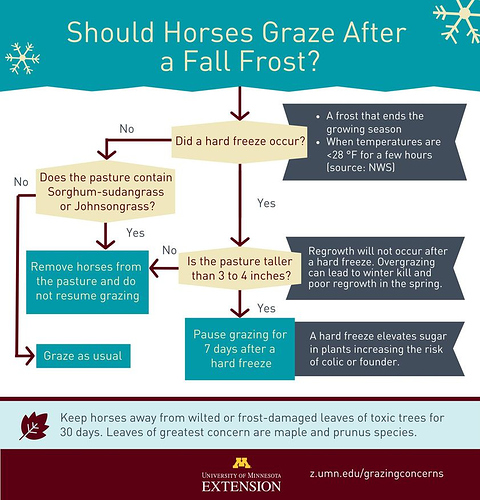I’m in the process of reintroducing my horse to grass after 10 months of stall rest and no grass. He’s currently at 1 hr 45 min. He does not have metabolic problems and lived out 24/7 on pasture prior to his injury without issue. That said, he has a sensitive stomach and has had gas problems during stall rest and I have had to take the grass transition exceptionally slow due to this (we’ve been working on grass acclimation for 5 weeks). Here is the question. We are facing our first frosts and possible freeze the next few nights with warmer, sunny days. Then we will have a general warm up. (I’m on an northern Virginia). I know this skyrockets sugar content. Would you:
- keep slowly increasing grazing time
- stay at current grazing time ( if so, how long based on the weather)?
- decrease grazing time (if so, by how much and for how long)?
I’ve done a ton of reading but can’t figure out what is right in this situation, as most of what I read applies to IR/metabolic horses. Thanks!!

